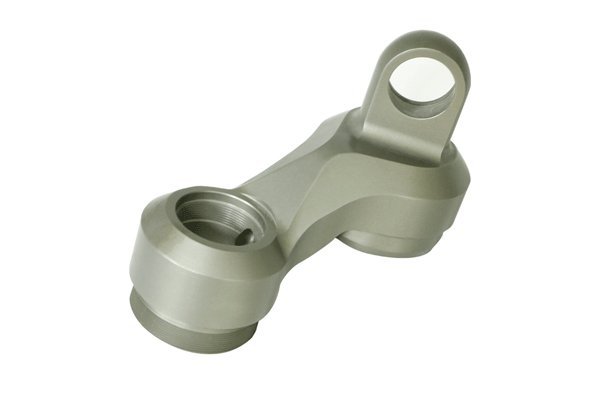Opening
Did you know that manufacturing contributed approximately $2.3 trillion to the U.S. economy in 2020 alone? As a significant sector, it showcases remarkable growth and evolution over the years. Yet, while advancements in technology have streamlined production processes, one aspect continuously impacts the core of the industry: machining hourly costs. These costs are not just numbers on a balance sheet; they serve as a barometer for the overall health of the manufacturing sector. How do changes in machining hourly costs forecast shape industry development, and what steps can companies take to navigate these fluctuations effectively?
Understanding Machining Hourly Costs
Before delving deeper, it’s critical to define what machining hourly costs entail. Essentially, these costs cover all the expenses incurred during the machining process over a certain period, including:
Understanding these constituent elements is essential for manufacturers aiming to optimize their operations and maintain competitiveness.
Long-Term Trends Affecting Machining Hourly Costs
The landscape of machining hourly costs is subject to various long-term trends which can be broadly categorized into:
Innovation does not stand still; the introduction of robotics, automation, and IoT technologies is transforming the machining sector. Using advanced machinery and smart manufacturing systems can lead to increased efficiency, reduced labor costs, and improved output rates. Businesses that adopt these technologies often see a decrease in machining hourly costs, but the initial investment can be substantial.
The continued impact of the labor market, marked by skill shortages and rising wages, invariably influences machining costs. As skilled labor becomes harder to find and more expensive, companies may face increased hourly costs. On the other hand, businesses that focus on training and upskilling their workforce can mitigate these impacts, fostering a more adaptive workforce capable of optimizing processes and improving productivity.
Global events such as pandemics, trade tensions, or geopolitical conflicts can disrupt supply chains, leading to increased material costs. A fluctuating market for raw materials directly links to machining hourly costs. When input costs rise, manufacturers often face tough decisions about absorbing those costs or passing them onto customers. Developing resilient supply chain strategies and diversifying suppliers can help mitigate these risks.

With growing concerns about climate change and sustainability, industries are facing increased regulatory pressures. Compliance with environmental regulations can translate to additional overhead costs. However, embracing sustainable practices can foster innovation, potentially leading to lower operating costs in the long run.
Strategies for Navigating and Forecasting Machining Hourly Costs
Given the complex interplay of factors influencing machining hourly costs, below are detailed solutions for businesses looking to adapt:
Training your workforce is an investment into the very backbone of your machining operations. Regular training sessions geared towards advanced technologies—like CAD/CAM systems, CNC machines, and automation—will ensure that employees are equipped with the necessary skills to leverage new machinery effectively. Not only does this improve overall productivity, but it also enhances employee satisfaction and retention, reducing the associated costs of turnover.
Investing in automated solutions, such as CNC machines, can dramatically reduce the time needed for manufacturing complex parts. From robotics that undertake repetitive tasks to software that analyzes performance metrics, the potential for increased efficiency is substantial. Initially daunting and costly, most businesses find the long-term reduction in hourly costs justifies the upfront investments made on advanced manufacturing systems.
Shift from a “just-in-time” to a “just-in-case” inventory management strategy to buffer against supply chain disruptions. By maintaining a more robust inventory, manufacturers can ensure they have the necessary materials on hand, reducing the risk of project delays that can lead to increased costs. Establishing strong relationships with multiple suppliers can also enhance flexibility in sourcing materials.
Adopting lean manufacturing principles can result in more efficient processes, resulting in lower waste and higher quality outputs. Techniques such as value stream mapping can highlight where inefficiencies lie, allowing companies to refine their processes continually. Through these improvements, machining hourly costs can be reduced, and overall productivity can be enhanced.
While sustainable practices might initially seem to raise costs, effectively managed initiatives can yield significant long-term savings. Energy-efficient machines, recycling programs, and waste minimization strategies can enhance a company’s brand reputation and market positioning. Customers increasingly favor companies with sustainable practices, reflecting positively on the bottom line.
The Importance of Forecasting Changes in Machining Costs
Accurate forecasting of hourly machining costs is paramount for strategic planning. Companies that fail to adapt to changing conditions risk becoming obsolete, while those that can anticipate and respond to market shifts can maintain a competitively advantageous position. Regularly reviewing and revising forecasts can assist companies in being proactive rather than reactive when financial pressures arise.
In sum, the intricate landscape of machining hourly costs is influenced by a myriad of factors, from technological advancements to labor market dynamics. Businesses that engage in continuous learning, embrace automation, optimize their supply chain, implement lean practices, and value sustainability stand to not only mitigate costs but forge a path towards industry leadership.
With the manufacturing sector’s vital role in the global economy, it’s crucial for industry players to remain aware of these evolving trends and their implications on cost and productivity. Readers equipped with this knowledge are better prepared to navigate the complexities of machining and optimize their operations accordingly. Investing time in understanding these trends and strategies is not just beneficial; it’s essential for long-term success in a fiercely competitive landscape.






